Puffball mushrooms are delicious, versatile, and wildly entertaining.
People often encounter these pillowy treasures long past their prime, when stepping on one will yield a delightful eruption of spores careening in all directions.
If you want to eat a puffball, you’ll need to find one before this “smoke bomb” stage. Read on to discover how to identify fresh puffball mushrooms in the field and learn about some common look-alikes to avoid on your journey.
How to Identify Puffball Mushrooms
The term “puffball” is generic and refers to many different mushrooms. All of them fall within the division Basidiomycota, with edible species belonging to the genera Calvatia, Calbovista, and Lycoperdon.
Different field guides often feature different taxonomy surrounding puffballs, and we probably won’t get any clear definitions until some mycological hero performs comprehensive genetic testing. But while classifying them can be challenging, puffballs themselves are delightful and easy to identify.
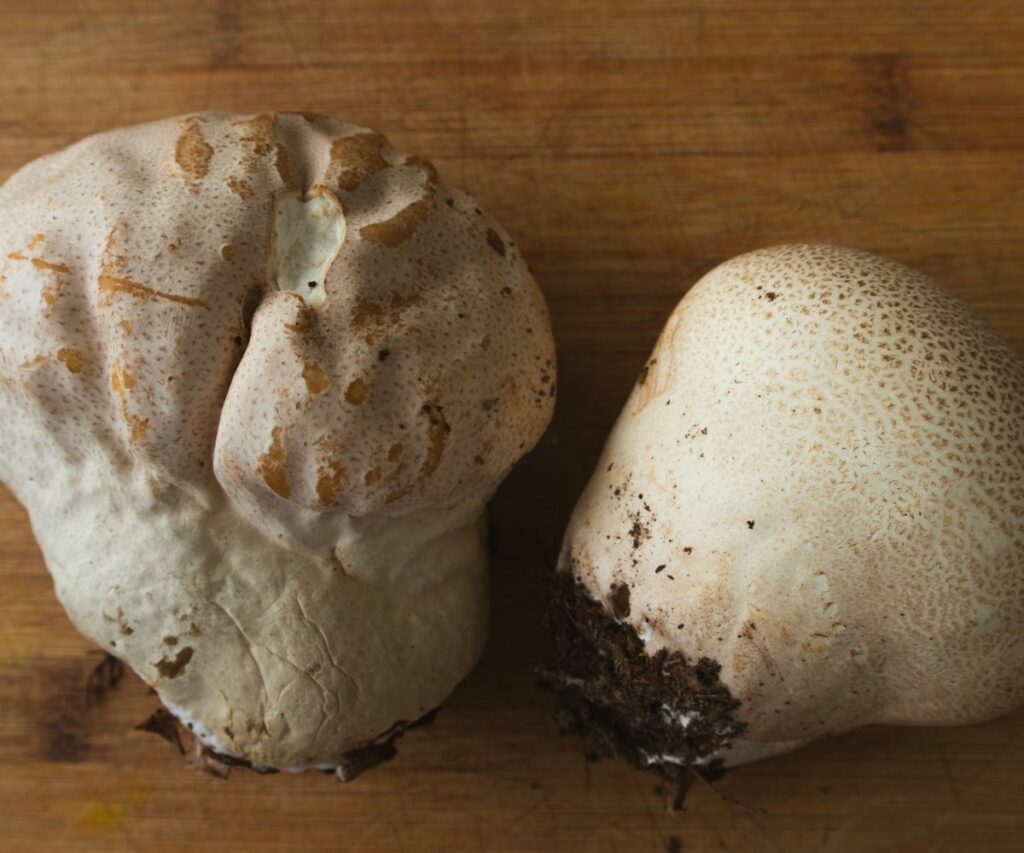
Appearance
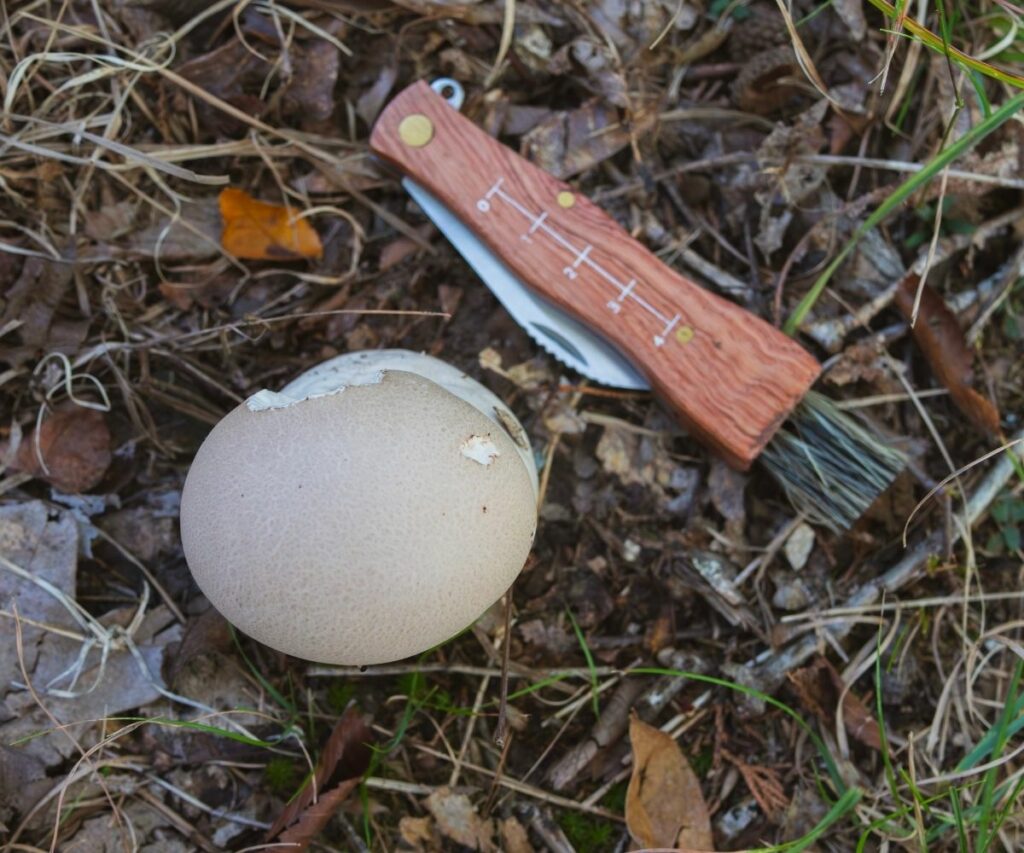
Puffballs are adorable, but it’s important to remember that they aren’t shaped like most other mushrooms. They have no cap or pored underside but instead sport a rotund fruiting body without distinct zones.
Some puffballs remain just an inch or so in diameter, while others may grow over a foot. According to Guinness World Records, the largest puffball ever found spanned over eight feet and weighed nearly 50 pounds!
- Body: Puffballs are round, globular, or shaped like an upside-down pear. They can be white, pale gray, or brownish, with some species featuring scales or lines of darker pigmentation. Several species have small warts or protrusions, and a few have larger spikes or horns.
- Flesh: The flesh of a specimen in its prime will be solid and pure white when you cut into it. There aren’t any exceptions to this rule. Dark-colored flesh means it isn’t an edible puffball, while a greenish or brownish tint means the specimen is past its prime and no longer suitable for consumption.
- Pore surface: There isn’t one! Instead of a pore surface, puffballs have millions (or trillions) of spores inside the fruiting body. That’s why sporing specimens explode when you step on them — you break the cap open, releasing the spores inside. What if nobody ever jumps on them? No worries. Eventually, these fungi develop a hole on top where their spores escape.
- Stalk: Puffballs do not have a true stalk. However, certain species taper down and appear short and stem-like toward the ground.
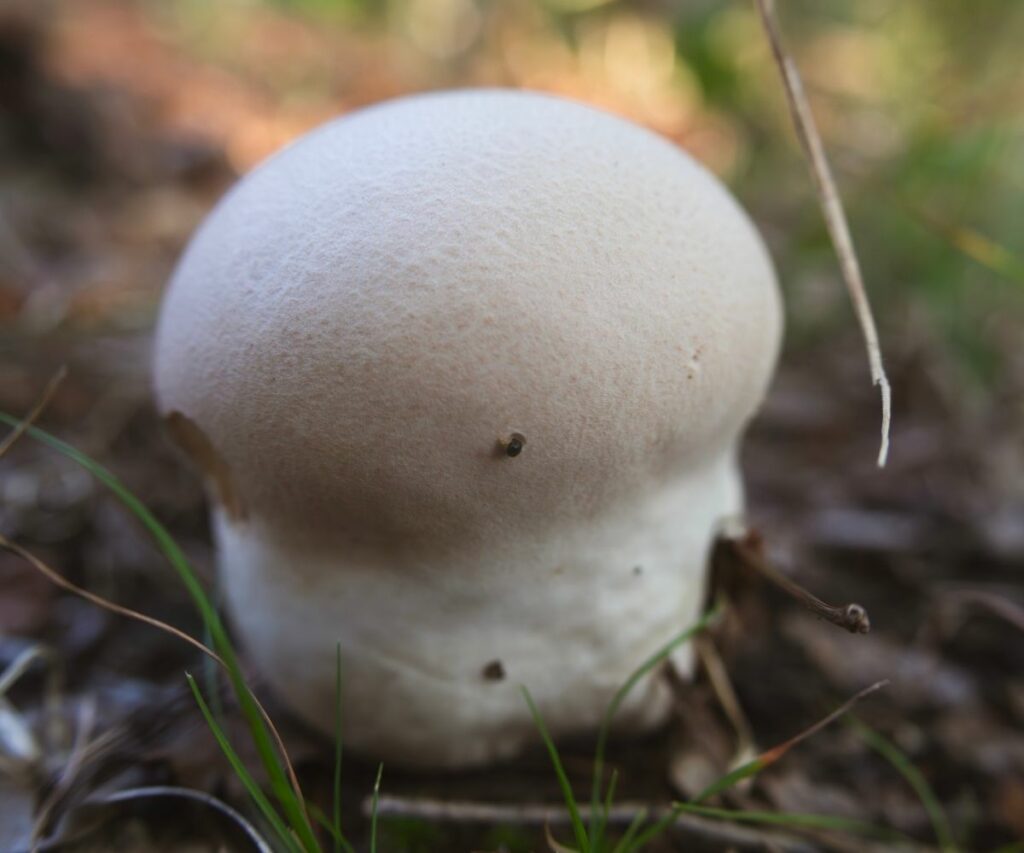
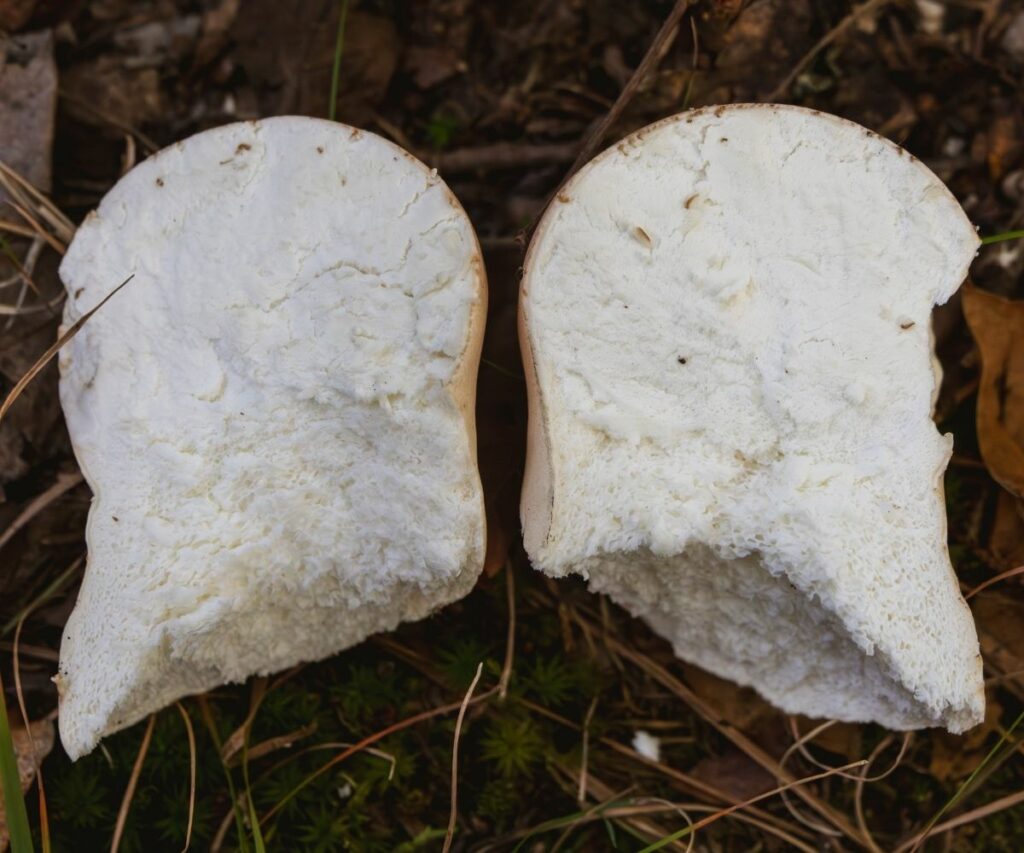
Species Variation
There are tons of puffball species in the US, and all those featuring white flesh are considered choice edibles. No matter where you live, you’ll likely have several species growing around you from different genera. Here are some telltale characteristics that each genus is prone to display:
- Lycoperdon sp.: Members of this genus include common puffballs and pear-shaped puffballs with bulbous, stem-like bottoms. They may be smooth, scaled, or feature tiny white spikes. It’s common for these species to sprout in clusters across several feet of ground or from the bark of downed trees. They usually stay small, rarely reaching more than one or two inches across.
- Calvatia sp.: This genus includes the coveted giant puffball and the somewhat macabre brain puffball, among many others. Members may be white, smooth, and blobby. They usually lack bulbous bottoms or stem-like protrusions. Some can grow to the size of a grapefruit or much larger when conditions are right.
- Calbovista subsculpta: The sculptured puffball is the only member of its genus. It is unmistakable, featuring thick, raised warts protruding from its body in a gorgeous geometric pattern. This species may grow up to six inches across.
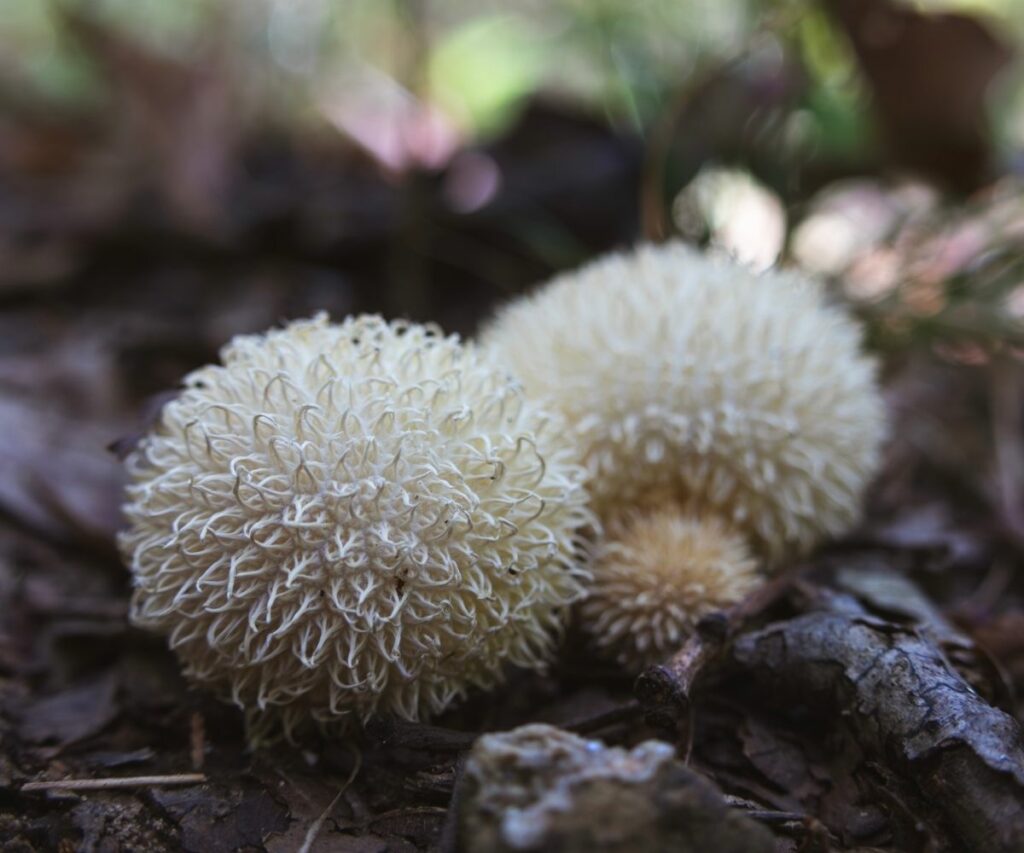
Fun fact: The name Lycoperdon is derived from the Latinized Greek words lyco, meaning “wolf,” and perdon, meaning “to break wind.”
Somewhere out there, a scientist named a mushroom “wolf fart.”
Texture, Taste, and Smell
You want to examine all specimens thoroughly before you take them home. While puffballs are easy to spot, other toxic fungi can closely resemble them when young. Because of this, it’s imperative to slice open your mushroom before bagging it.
The white flesh inside will be soft and squishy. When you press down on it, it should have some give and spring back like a sponge. Puffballs don’t smell like much but may have a slightly earthy and nutty odor. If it smells fishy or feels slimy, leave it be.
Puffballs’ taste is subtle and mildly nutty. The taste and desirable texture are why we love them so much — they can be incorporated into any dish, acting alone or as a stand-in for lasagna noodles, pizza crusts, and even pie filling!
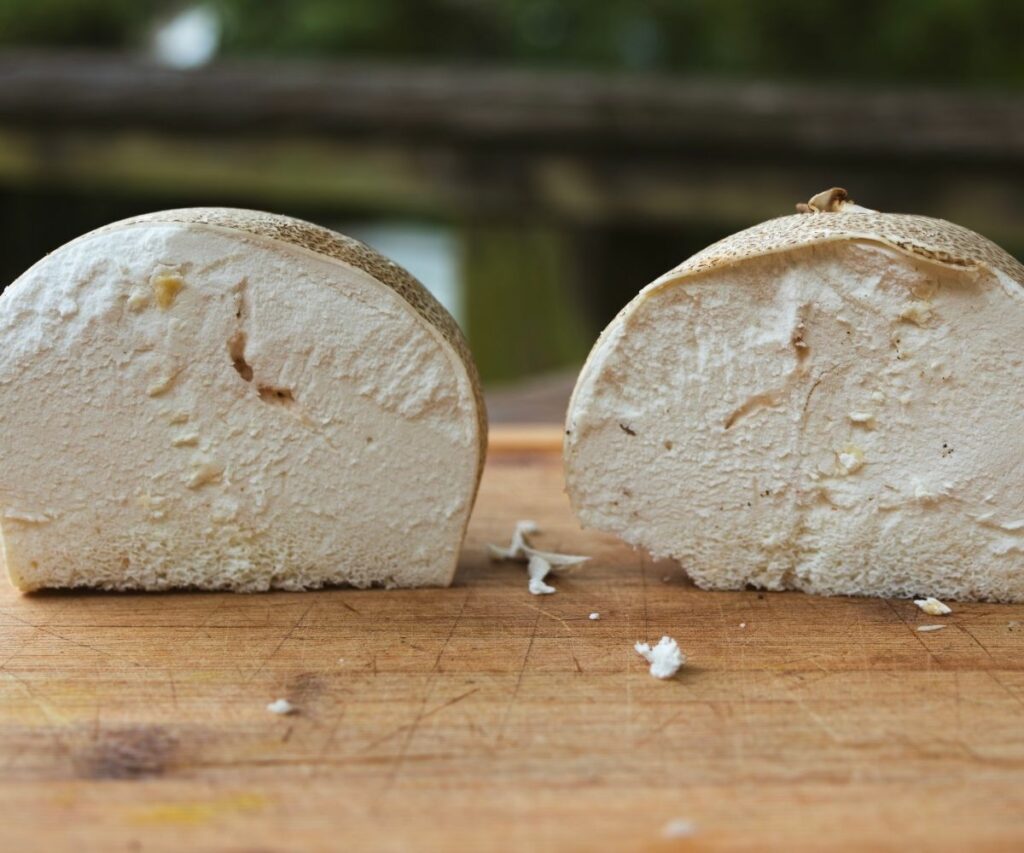
Habitat
Like wood ear and turkey tail, puffballs are saprobic. They feed on dead trees and leaf litter, breaking down once-living organisms and perpetuating the delightful decay that makes the world go round. Even though all species use the same mechanisms to feed, grow, and reproduce, their habitat can vary significantly.
Giant puffballs in the Calvatia and Calbovista genera often appear in meadows or grassy areas. It’s common to see them in a circular formation known as a fairy ring, while others are scattered in the forest undergrowth or along edges and trails.
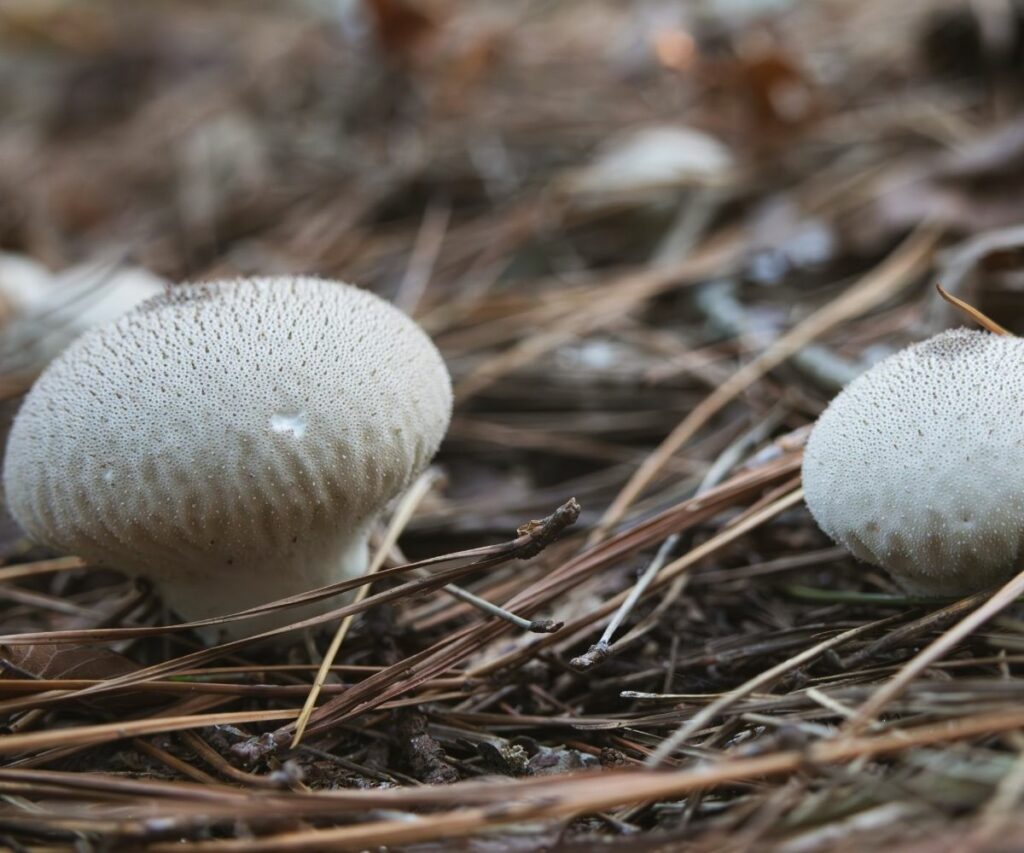
Puffballs in the Lycoperdon genus are more apt to grow in clusters from the leaves, soil, or moss on the forest floor. However, they can also grow directly on trees. Sometimes, you’ll see a log completely enveloped in these tiny bulbs.
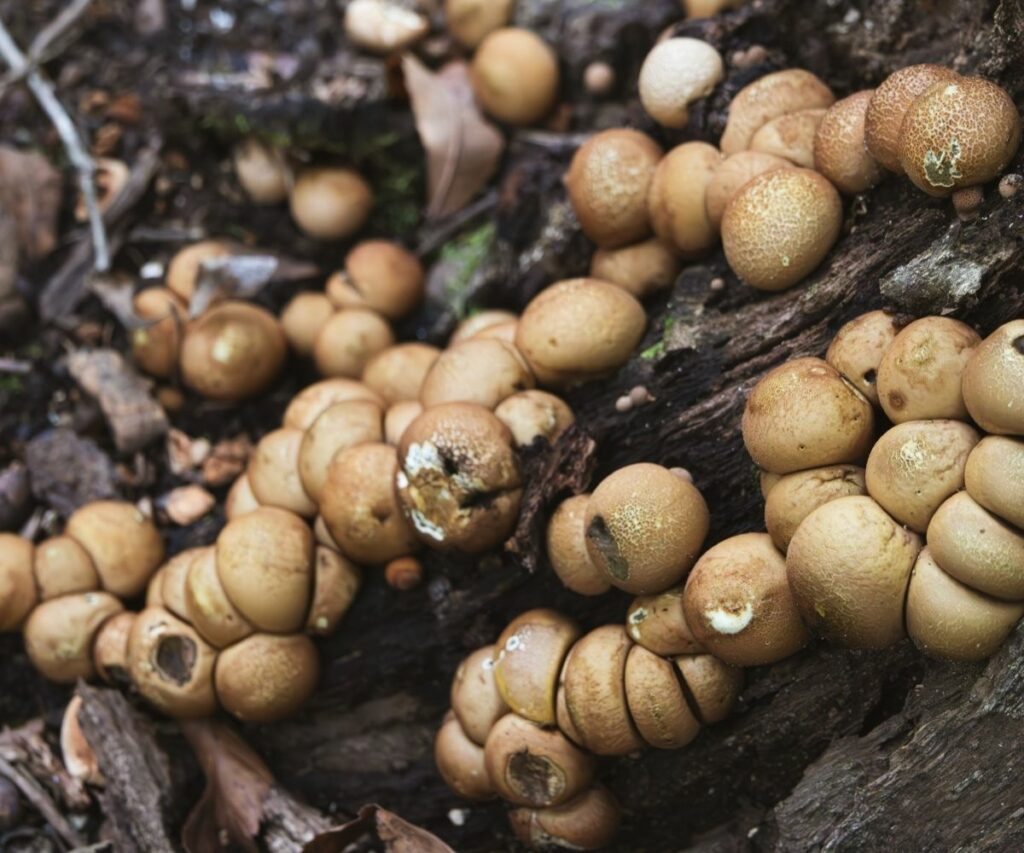
Season and Conditions
Puffballs are the harbingers of autumn. They pop up in late August and last until October or November, though they can appear outside these times when conditions are right. Like most mushrooms, they usually appear a day or two after a good rain.
Depending on the species, puffballs will generally reach prime in two to five days. You need to pick them at or right before prime. Once they have the slightest discoloration, they’re no longer good to eat.
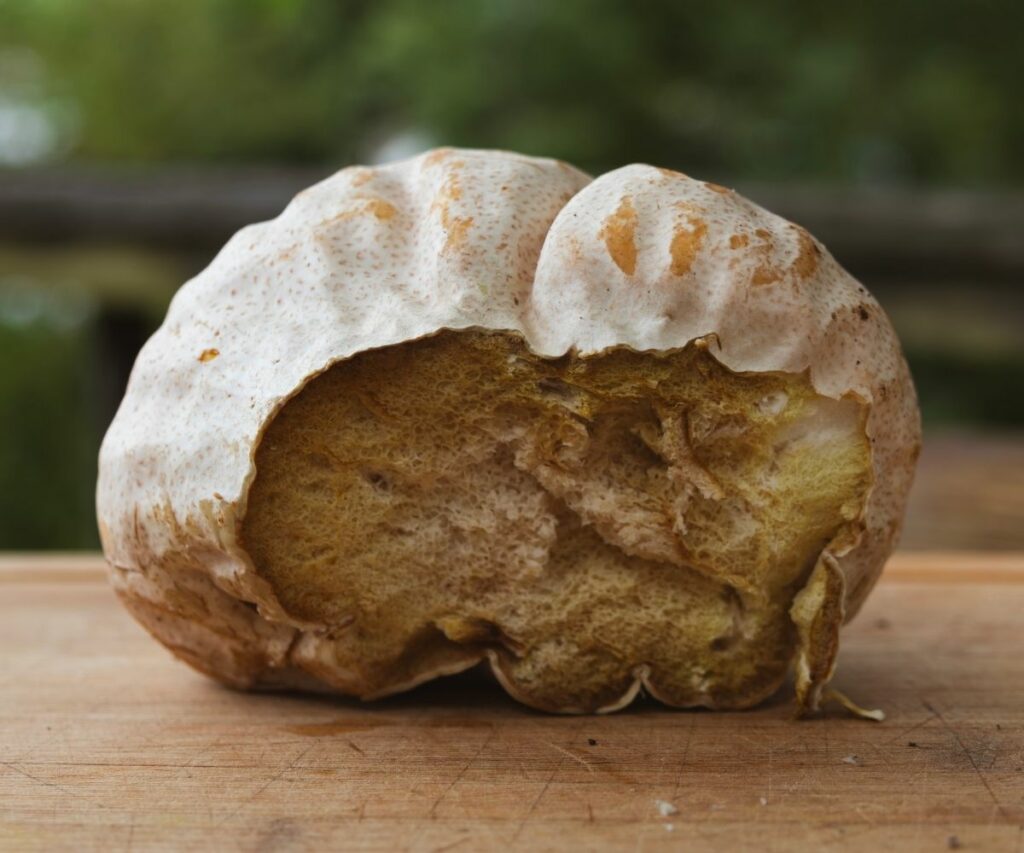
Unlike chicken of the woods and lion’s mane, puffballs don’t act like an annual. They may return to the same general area since it supports their growth conditions, but they won’t be in the exact same place year after year. So, if you find them in a specific spot one autumn, you may need to walk around some to find them again the next.
Puffball ID Checklist
- Round or globular
- White or pale gray to light brown exterior
- Pure white flesh
- Unbroken flesh
- Growing from ground or trees
Recognizing Common Look-Alikes
Scleroderma Species
Species in the Scleroderma genus are ball-shaped and vary in size from one to six or more inches across. Like puffballs, they have no distinct cap or pore surface but contain spores inside the fruiting body. The outer skin is pale to deep brown and can be scaly, spiny, or smooth.
It’s very easy to mistake members of the Scleroderma genus for puffballs. In fact, many field guides and mycologists actually refer to them as a type of puffball. However, it’s vital to make a distinction when discussing these fungi in the context of edibility — Scleroderma species are toxic, and you should never eat one.
Luckily, telling them apart is easy once you slice one open. Scleroderma species have dark brown, black, or purplish flesh. They are never pure white like an edible puffball. Moreover, the skin is thicker, like the rind of an orange or lemon. It is tougher and more difficult to dislodge, while the skin of a puffball is thin and peels away easily.
Young Amanita Species
Members of the Amanita genus begin their life cycle as a small white button on the ground. This is a universal veil that protects the developing mushroom in its early stages of life, and it is sometimes called an Amanita “egg.” The young Amanita will hatch from the egg within a few days, and the resemblance ends. But before this happens, it can look exactly like a tiny puffball.
This poses a genuine threat. The Amanita genus accounts for nearly 90% of mushroom-related deaths, with many members sporting fun nicknames like “death cap” and “destroying angel.” While certain edible species exist, you don’t want to mess around with these mushrooms as an amateur forager.
So, how can you tell an Amanita species apart from a puffball? Cut it open. If it’s an Amanita, the flesh will be broken, and you’ll see the outline of its cap and gills nestled inside. The formations may be obvious or more subtle, depending on how far the mushroom is in its development.
Puffballs are common, delicious, and very easy to identify. They’re the perfect mushroom for fall weather, so don’t hesitate to don a jacket and hit the trail for some foraging this season!








